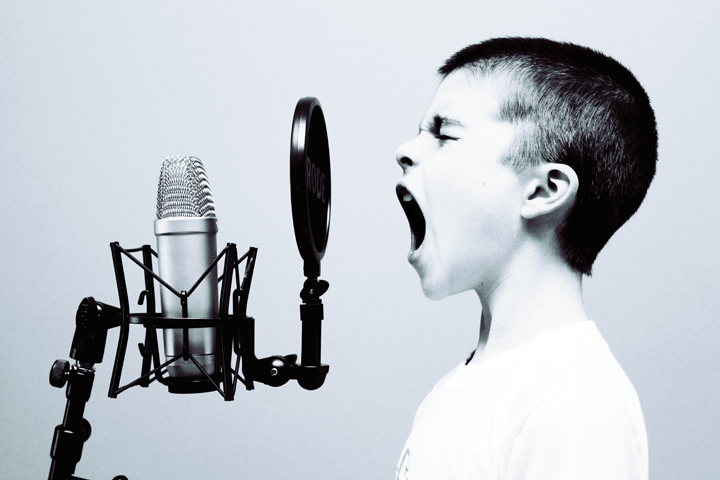Blog
Auditory Activity Ideas For The Child With Sensory Processing Disorder Or ASD (Part 5 Of 5)

Sensational Strategies to Strengthen Sensory Skills 101 FUN sensory activities to do with your child
Auditory alerting activities
Listening to sounds keeps us in touch with what is going on around us. It isn’t simply our physical ability to hear, but our ability to listen which allows our body to process the sounds in our environment and interpret what we hear. This allows us to develop properly and acquire skills such as memory, sequencing, comparing and contrasting sounds, associating sounds with symbols such as letters, and our ability to pay attention.
Here are some fun auditory strategies you can use with your child with sensory prcocessing disorder to alert her, to get him in touch with surroundings and in balance with himself.
– Listening to music with a fast beat
– Playing musical chairs (with no winners)
– Dancing to rock, jazz, rap, or fast kids music
– Drawing to music
– Bouncing to music on a hippety-hop or therapy ball
– Jumping rope and chanting
– Making up rhymes
– Singing songs you know, making up your own song
– Humming or playing a kazoo
– Blowing whistles
– Beating rhythm instruments
– Learning to play a musical instrument and practicing
– Reading out loud to your child and acting out different parts in different voices
– Giving your child (temporary!) control of noise: encourage him/her to pop balloons, turn on noisy devices like a blender or a vacuum cleaner, slam doors, etc.
Play different sound games together.
Here are some ideas (or make up your own, tailored to your child’s tastes and needs):
– A guessing game: Take turns tapping a rhythm and guessing the song
– A matching game: Sit back to back with your child and make a sound pattern by clapping, playing a tambourine or drum, singing or saying a “la la la la” rhythm, bouncing a ball, etc. Have your child repeat the pattern. Start simple; vary the counts and the speed as the child succeeds.
– An outside listening game: Go outside, listen, and identify the sounds in the environment around you, whether it is nature or a city. If it is not practical to go outside, listen to pre-made recordings, such as natural sounds (rain, the ocean, bird songs, animal vocalizations, etc.) or record your own (such as cars, trains, children laughing, a baby crying, a dog barking).
– An inside listening game: Sit still, listen, and identify the sounds you hear (traffic passing, the refrigerator making ice, the cat meowing, a neighbor’s door shutting, etc.).
– An inside listening and locating game: Again, sit quietly, listen, and isolate the sounds you hear. Then ask/answer questions about the sounds such as: Is the sound close or far away? Is it coming from inside or outside, the next room or this room, what part of the room? Is the sound loud or soft (volume)? Is the sound low or high (tone/frequency)?
– A shaking game: Put small hard items (buttons, pebbles, dice, nails, uncooked beans, rice, salt, sand, etc.) into small covered containers or jars that you can’t see through. Have your child identify what’s inside by shaking the jar and listening to the sounds it makes.
Recap and recall
We’ve discussed how to use strategic hands-on activities to build up the five sensory systems of:Tactile — touch
Vestibular — movement
Proprioception — muscle work
Visual — seeing
Hearing — listening
Please remember that there is no one specific strategy or activity that will resonate with all children. Use the suggested activities as a springboard to find and/or create the activities that are best for your family at this time. You need to trust that trial and error will work; that there are many, many strategies that are effective in getting into balance; and that what doesn’t work today may very well work next week or next month.
You have a lot of tools in your backpack now to support your goal of helping your child build his sensory processing abilities to achieve her “just right” functioning balance. Have fun putting them into practice!
A bonus activity
Twenty categories of activities per post = 100 activities, not 101!Here is the 101st, incorporating all the senses we’ve discussed: making sensory-based snacks with your child. Your child touches the ingredients and you both talk about them as your child adds them to the mixing bowl. You can incorporate movement and balance by having your child stand on one foot while s/he puts in ingredients, or jump to the refrigerator to gather ingredients. Muscle work comes in when your child mixes or kneads the ingredients together. Aural and visual attentiveness get exercised as your child follows your instructions. And when it’s done, you get to eat the results!
Looking ahead:
In upcoming posts, we will discuss other therapeutic activities that are also a lot of fun for your child.Do you and your child engage in any special listening activities? What works well for your family? Please share your thoughts in the comments section below. Also, let me know there or via email what topics you would like to discuss or hear more about.
Feel free to share or quote from this blog (with attribution, please, and if possible, a link), and to repost on social media.
I look forward to hearing from you!
All the best,
Miriam
